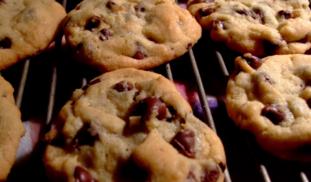Please wait...
About This Project
The chocolate chip cookie recipe has never been standardized. If you've alway wondered what goes into making a chocolate chip cookie chewy, cakey, or crunchy then you're going to like this project. I plan to make 8-10 batches of cookies at three different temperatures switching out one independent variable at a time. I will start by comparing creamed butter to melted butter. For every $100 contributed to this project, I will test an additional variable. You're also invited to join me at my home and eat the cookies if you become a backer.

Browse Other Projects on Experiment
Related Projects
One step closer to the perfect chocolate chip cookie
The chocolate chip cookie recipe has never been standardized. If you've alway wondered what goes into making...

